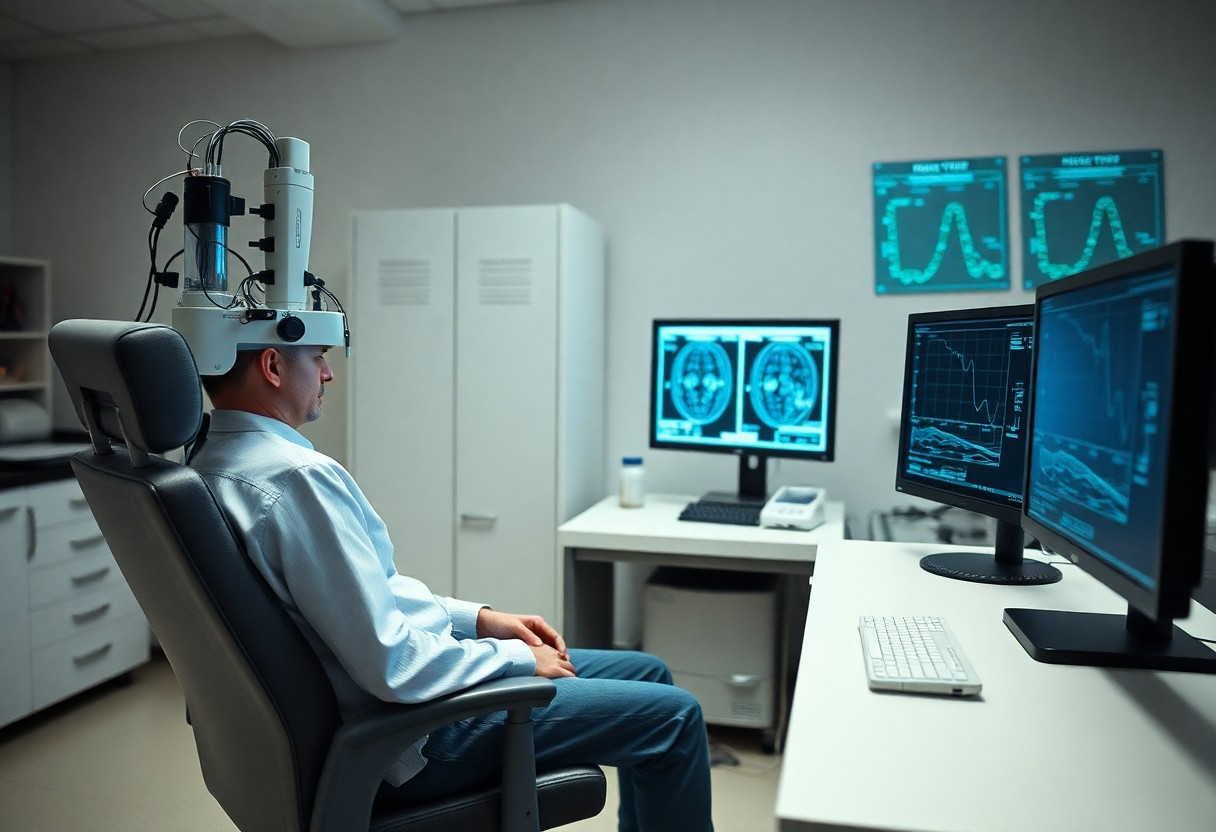
Psychophysiology explores into the complex interplay between your mind and body, especially in high-stakes situations like lie detection. In this blog post, you’ll explore how polygraphs, commonly known as lie detectors, measure physiological responses—such as heart rate, blood pressure, and respiration—to determine whether you are being truthful or deceptive. Understanding the mechanics of polygraphs not only sheds light on their limitations but also emphasizes their significance in law enforcement and personal integrity. Join us as we unravel the science behind truth and deception.

Key Takeaways:
- Polygraph Mechanism: Polygraphs measure physiological responses such as heart rate, blood pressure, and respiration to assess truthfulness.
- Limitations: The accuracy of polygraphs is subject to debate, as emotional states can affect results, leading to false positives and false negatives.
- Interpretation Challenges: Skilled examiners play a vital role, as the interpretation of results can vary, making it important for proper training and experience.
The Fundamentals of Polygraphy
The science of polygraphy revolves around the measurement of physiological responses to assess truthfulness and detect deception. By monitoring your body’s involuntary reactions, such as heart rate, blood pressure, and respiratory patterns, a polygraph can reveal potential lies. While not entirely accurate, polygraphs are widely utilized in law enforcement and security settings to assist in interrogations and investigations.
History of Polygraph Development
Between the late 19th and the early 20th centuries, polygraph technology evolved significantly. Initially, the polygraph was a rudimentary device developed by William Marston, who introduced emotional response indicators. Later, in the 1920s, John Augustus Larson refined the instrument to measure multiple physiological functions simultaneously, laying the groundwork for modern polygraph techniques.
Types of Polygraphs and Their Functions
Functions of polygraphs can vary based on the specific device and its intended use. The most common types include:
| Type | Description |
| Traditional Polygraph | Measures heart rate, blood pressure, respiration, and skin conductivity. |
| Computerized Polygraph | Utilizes software for data analysis and easier interpretation of results. |
| Digital Polygraph | Offers enhanced precision and digital recording capabilities. |
| Voice Stress Analysis | Analyzes voice frequency changes as an indicator of stress. |
| Functional Magnetic Resonance Imaging (fMRI) | Examines brain activity to assess truthfulness. |
- Polygraph serves to identify deception.
- Analysis helps in investigations.
- Stress levels provide insight into truthfulness.
- Frequency changes indicate emotional response.
Assume that you are considering the various types of polygraphs; understanding their distinct functions can help you make informed decisions regarding their application.
Indeed, each type of polygraph has unique features and advantages. For instance, the traditional polygraph is often seen as the standard tool in many security and investigative processes, while computerized versions offer enhanced data accuracy. If you’re examining technological advancements, you might find fMRI particularly intriguing, as it innovatively combines neuroimaging with lie detection. Understanding these options allows you to tailor the approach to your specific needs.
| Type | Functionality |
| Traditional | Standard physiological monitoring. |
| Computerized | Automated data analysis. |
| Digital | Enhanced accuracy and recording. |
| Voice Stress | Evaluates voice for stress indicators. |
| fMRI | Brain activity assessment. |
- Drug investigations may benefit from varying techniques.
- Accurate results lead to better outcomes.
- Stress analysis can point to deception.
Assume that you need a precise and reliable method for truth verification; selecting the right type of polygraph is vital for your success in any context.
The Physiological Basis of Lie Detection
Assuming you are curious about how polygraphs assess truthfulness, it’s imperative to understand the physiological indicators they measure. Polygraphs monitor changes in your bodily functions—such as heart rate, respiration, and skin conductivity—to determine if you may be deceiving. For an in-depth exploration of these mechanisms, check out How do lie detectors work?
Key Biological Indicators
Above all, your body’s responses to stress can be revealing when lies are being told. A polygraph measures physiological factors like heightened heart rate and increased sweat production, which can suggest emotional distress linked to deception.
The Role of Stress in Responses
One of the primary elements in lie detection is the role of stress, which can significantly affect your physiological responses. Stressful situations often induce a fight-or-flight reaction, causing notable changes in your body that a polygraph can record.
In addition to revealing truthfulness, stress plays a significant role in how your body reacts during questioning. When you are anxious or under pressure, your heart rate may increase, and your breathing can speed up, making it harder for you to maintain a calm demeanor. These involuntary reactions might lead to false positives in lie detection, where innocent individuals show signs of stress, misinterpreted as deception. Managing stress through techniques like deep breathing can potentially create more accurate results, allowing for a clearer understanding of your actual intentions.
How a Polygraph Test is Conducted
Despite how it may seem, a polygraph test is a meticulous process that evaluates physiological responses to determine truthfulness. Upon initiating the procedure, you will be connected to various sensors that monitor your heart rate, blood pressure, respiration, and skin conductivity. For a deeper understanding of the mechanisms behind these assessments, check out this insightful resource on The Science Behind Lie Detector Tests.
Pre-Test Procedures
An vital part of the polygraph process involves pre-test procedures, where the examiner explains the test’s purpose, methodology, and what you can expect. This stage often includes an interview to establish a baseline for your physiological responses and to clarify any potential misunderstandings about the test.
Test Administration and Techniques
By understanding the techniques used during test administration, you can better appreciate how polygraphs function. The examiner will typically begin by asking neutral questions to gauge your baseline physiological responses before progressing to more relevant questions related to the topic being investigated.
Further, during the test, the examiner employs various questioning techniques to elicit responses and analyze your physiological reactions. Factors such as your stress levels and emotional state can strongly influence your responses. It’s vital to maintain a calm demeanor, as heightened anxiety may lead to false positives that could misinterpret your trustworthiness. Ultimately, the examiner will carefully review the data collected to reach a more informed conclusion regarding your truthfulness.

The Interpretation of Polygraph Results
Unlike a simple pass or fail outcome, interpreting polygraph results requires a nuanced understanding of physiological responses. The examiner assesses changes in heart rate, respiration, and skin conductivity, analyzing how these measurements correlate to the subject’s responses. The overall context, including the subject’s background and the nature of the questions, also plays a pivotal role in drawing conclusions about truthfulness and deception.
Analyzing Physiological Data
After collecting the physiological data during the polygraph test, the examiner meticulously reviews the responses for patterns indicating stress, anxiety, or deception. Each physiological measure is compared against baseline readings taken prior to questioning. By identifying significant deviations, the examiner can infer the likelihood of truthfulness or deception in the subject’s answers, making interpretation an intricate procedure that demands both skill and experience.
Common Misconceptions and Critiques
Between popular beliefs and scientific realities, there are numerous misconceptions surrounding polygraph testing. Many people assume that a polygraph is foolproof, when in fact, it is not infallible and can yield false positives or false negatives. Critics argue that individual responses can vary significantly due to personal stress levels, making the results unreliable. Furthermore, the assumption that physiological responses exclusively indicate deception is misleading, as various factors can affect your body’s reactions during questioning.
Misconceptions about polygraphs can lead to misunderstandings regarding their effectiveness. The belief that the machine measures lies directly is a significant fallacy; it actually records physiological changes that may correlate with stress or anxiety rather than deceit itself. Additionally, some people might think they can easily manipulate the test results, but this can lead to detrimental misinterpretations about your honesty. It’s vital to approach polygraph results with a balanced perspective that acknowledges their limitations while considering them as one component of a broader investigative process.
The Applications of Polygraph Testing
Many professionals utilize polygraph testing for various purposes, such as criminal investigations and pre-employment screenings. This tool can help determine truthfulness in contexts like law enforcement and corporate hiring processes. For a deeper understanding of polygraph reliability, you can check out Do Polygraph Lie Detectors Really Work?.
Uses in Criminal Justice
For criminal investigations, polygraphs can serve as a tool to assess the truthfulness of suspects and witnesses. Law enforcement agencies often employ these tests to help narrow down investigations and determine the credibility of provided information.
Employment and Security Screening
Across various industries, polygraph tests are increasingly used in pre-employment and security screening to evaluate the honesty of candidates. Organizations may request these tests to mitigate risks associated with hiring individuals in sensitive positions.
To ensure your organization maintains a safe and reliable workforce, it is advisable to consider polygraph testing as part of your hiring process. This technique can help assess the integrity of candidates, ultimately reducing the risk of hiring individuals with deceptive backgrounds. Employers often find that employing polygraph testing leads to a more trustworthy workforce, thereby enhancing security and fostering a positive work environment.
The Science Behind Its Reliability
All polygraphs are often deemed unreliable due to various factors affecting their accuracy. Understanding these factors can help you better assess the validity of polygraph results. Some key influences include:
- Emotional state of the individual
- Physical condition such as health and medications
- Experience level of the examiner
- Question phrasing and structure
Any significant change in these elements can lead to misleading outcomes in polygraph tests.
Research Studies and Findings
Along with ongoing debates, studies on polygraph effectiveness reveal varied outcomes regarding their accuracy.
Science has shown that the reliability of polygraphs can range from 80% to 90% in some scenarios, making them as effective as common lie detection methods. However, it’s necessary to be aware of the potential for false positives and false negatives that can arise from individual differences, such as anxiety levels or medical conditions. Continuous research aims to refine the methodologies involved in polygraph testing, yet the inherent subjectivity of human emotions leaves room for error in many interpretations. Ultimately, your understanding of these factors can better inform your perception of polygraph results.
Summing up
Drawing together the insights on the science of truth and deception, you now understand how polygraphs function by measuring physiological responses such as heart rate, blood pressure, and respiration. These indicators are believed to correlate with truthfulness and deceit, providing a framework for assessing honesty. While polygraphs can be useful tools, it’s important to recognize their limitations and the complexities of human behavior. As you examine these findings, consider the implications for both personal and societal contexts in navigating truth and deception.
Q: How does a polygraph actually work to detect truth and deception?
A: A polygraph, commonly known as a lie detector, measures physiological responses that are believed to be associated with truthfulness and deception. During the test, sensors are attached to the individual to track various bodily functions, including heart rate, blood pressure, respiratory rate, and galvanic skin response (sweating). The examiner then asks a series of questions while collecting this data. The theory behind the polygraph is that deceptive answers may provoke stronger physiological reactions compared to truthful ones, as the individual might experience anxiety or stress when lying.
Q: What types of questions are asked during a polygraph test?
A: Questions posed during a polygraph examination can be categorized into three main types: relevant, irrelevant, and control questions. Relevant questions pertain directly to the matter under investigation, while irrelevant questions are unrelated and serve as a baseline to gauge the individual’s normal physiological responses. Control questions are designed to elicit a more definitive physiological response and often involve past behaviors that are likely to provoke an emotional reaction. This structured approach helps examiners compare responses and interpret the data more effectively.
Q: Are polygraph results considered scientifically reliable and admissible in court?
A: The reliability of polygraph tests has been a subject of debate within both the scientific community and the legal system. While some studies suggest that polygraphs can have a high rate of accuracy in detecting lies, critics argue that the physiological responses they measure can also be influenced by factors like anxiety, nervousness, or medical conditions. Consequently, courts in many jurisdictions do not universally accept polygraph test results as evidence, and their admissibility often depends on the specific case and the judge’s discretion. It is vital to consult legal experts when considering the implications of polygraph outcomes in a legal context.
